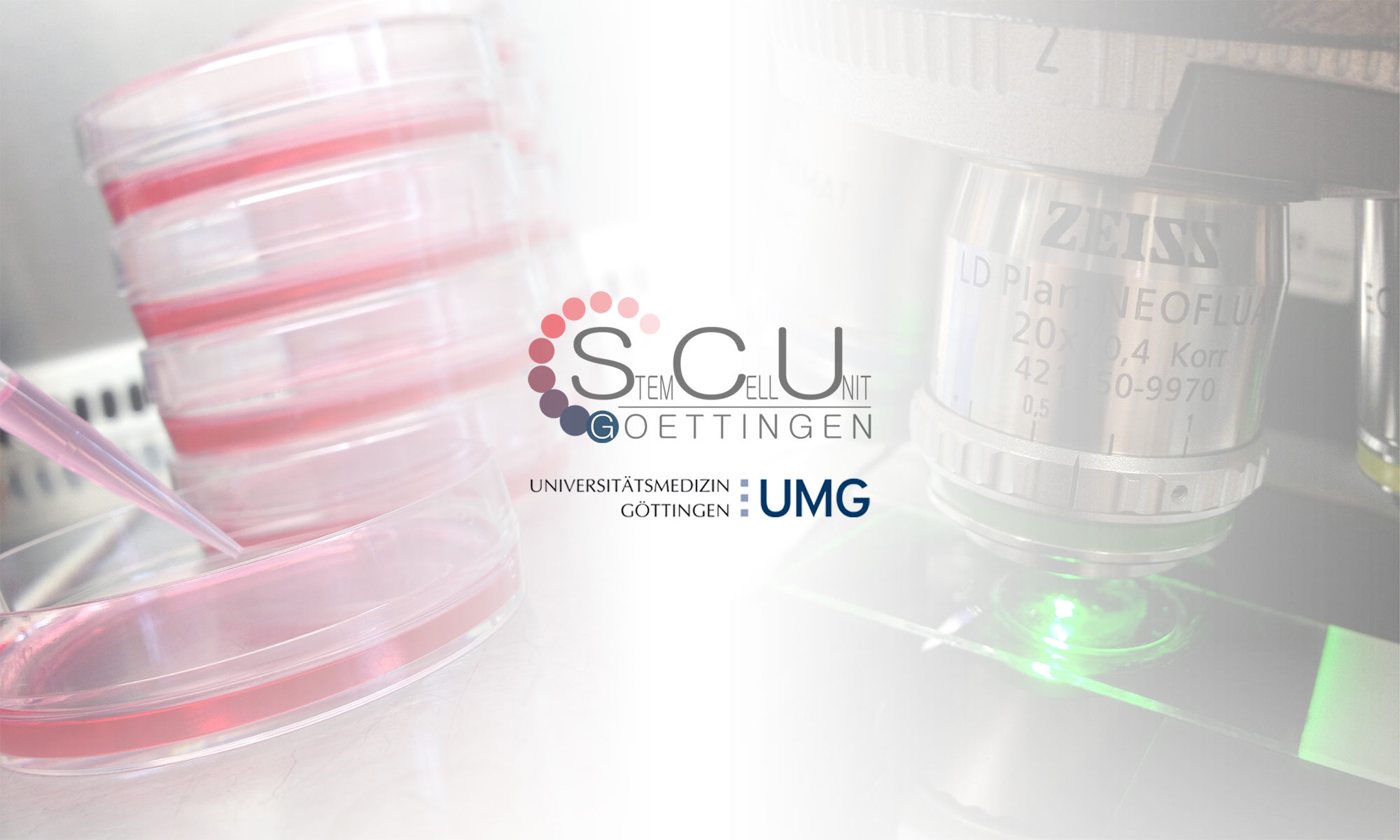Pluripotent stem cells
The application of pluripotent stem cells in biomedical basic research and in various therapeutic approaches has great potential and is a major white hope for the treatment of diseases. Pluripotent stem cells have the capacity to self-renew without ageing as well as to differentiate into cell types of all three embryonic germ layers of the adult organism. These properties exist in those cells that constitute the inner cell mass of an early embryo for a short period of time only which are therefore termed embryonic stem cells. For the isolation of human embryonic stem cells, the destroying of embryos is necessary, causing severe ethical problems. In order to overcome these ethical hurdles, research was focused on finding an alternative kind of cell that harbours the features of human embryonic stem cells.
A great break-through was achieved by the group of the Japanese researcher Shinya Yamanaka. They were the first to succeed in reprogramming adult cells back to a pluripotent state and thus creating induced pluripotent stem cells (or short iPS cells). For this discovery, Prof. Yamanaka together with the British researcher John Gurdon were awarded the Nobel Prize in Physiology or Medicine in 2012. iPS cells can be generated from somatic cells of various species, such as mouse, non-human primates or humans, by inserting specific factors into the cells. Just like embryonic stem cells, iPS cells have the potential to self-renew and to differentiate and can therefore be applied as an ethically uncritical alternative for a range of applications.
Stem cells in heart research
iPS cells can be derived from cells of various origins, such as skin fibroblasts, hair follicle cells or mononucleated blood cells. With the help of this method, pluripotent stem cells of virtually every human could be generated from their body’s own cells in the culture dish. These would harbour a genome identical to their donor’s and as a consequence also the same genetic variants and defects. Exploiting this technique, we were able to build a continuously growing biobank of iPS cells from patients with diverse genetic cardiac diseases as well as from a variety of healthy donors in recent years.
Today, research is already capable of purposefully differentiating patient-specific iPS cells into a range of different cell types, such as nerve, liver or contracting heart muscle cells in large quantities und high purities, providing a unique model for further applications. Patient-specific iPS cells offer manifold possibilities in regenerative approaches (e.g. in the generation of artificial heart tissue), in the modelling of diseases in the culture dish (for a better understanding of the disease) and in drug development and pharmacological toxicity screenings. The overarching aim is often the development of novel treatment strategies and drugs in order to combat diseases.
BIOspektrum: Patientenspezifische iPS-Zellen und deren Anwendung in der Herzforschung (german)
